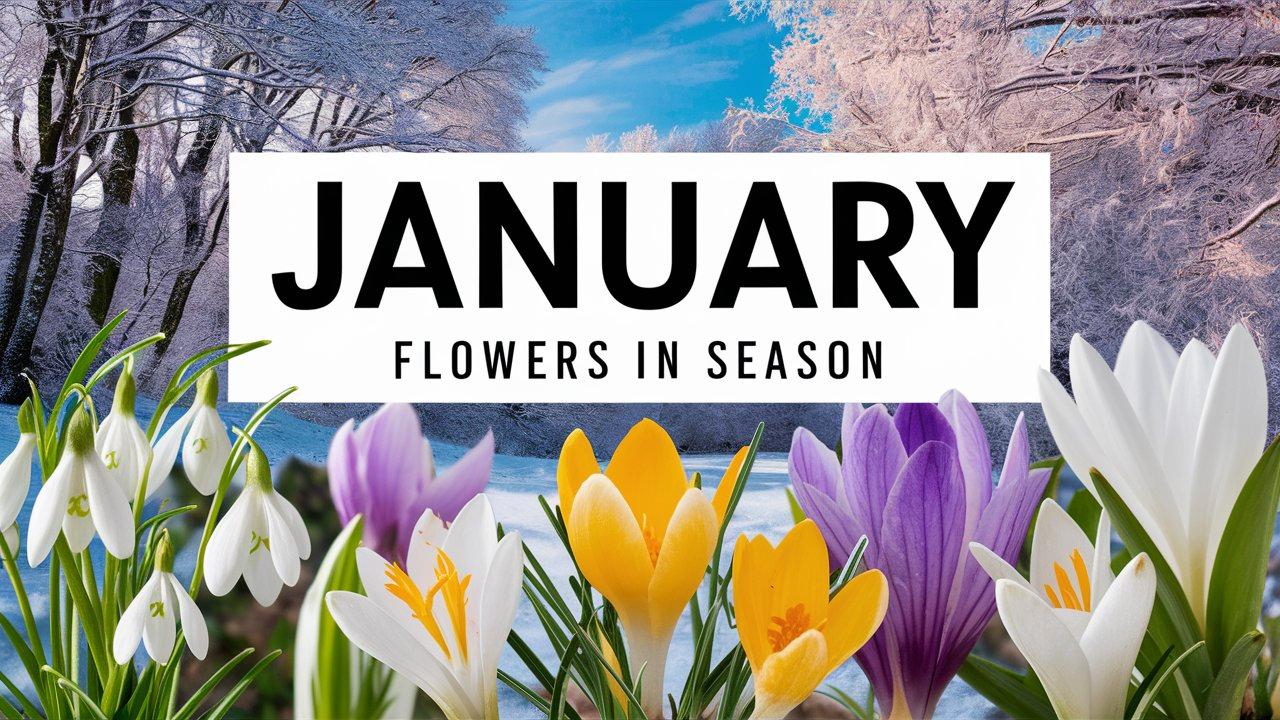This post will take you on an informative journey through the vibrant world of January flowers. From stunning winter blooms to hardy perennials, we’ll explore the unique qualities, symbolism, and care associated with each flower that graces our gardens and homes during this month.
Snowdrop (Galanthus nivalis)

One of the first flowers to emerge in January is the delicate snowdrop. These petite white flowers are often seen pushing through the snow, symbolizing hope and renewal. The botanical name, Galanthus nivalis, translates to “milk flower of the snow,” which perfectly encapsulates its ethereal beauty.
Snowdrops thrive in well-drained soil and can often be found in woodlands and meadows, making them a favorite for naturalizing in gardens. Their ability to bloom at such low temperatures is a testament to their hardiness. Snowdrops are also known for their medicinal properties; they contain galantamine, a compound that has been used to treat Alzheimer’s disease. With their fragile appearance, snowdrops bring a ray of hope during the bleak winter days.
Winter Jasmine (Jasminum nudiflorum)
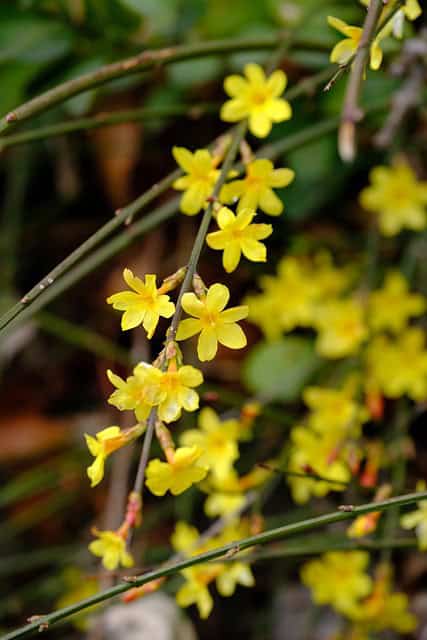
As January starts to thaw the frost, the vibrant yellow blooms of winter jasmine brighten the landscape. Typically blooming from late winter through early spring, this hardy shrub showcases its cheerful yellow flowers on bare stems, signaling the end of winter’s hold. Native to China, winter jasmine thrives in a variety of soils and can tolerate poor conditions, making it a perfect addition to any garden.
Culturally, jasmine is associated with love, beauty, and sensuality, and its sweet fragrance has made it a favorite in perfumes. In addition to its aesthetic and olfactory appeal, winter jasmine is often used in traditional Chinese medicine. It is believed to promote relaxation and has anti-inflammatory properties. January is an excellent time to incorporate this resilient plant into your landscape for a burst of cheer.
Hellebore (Helleborus)
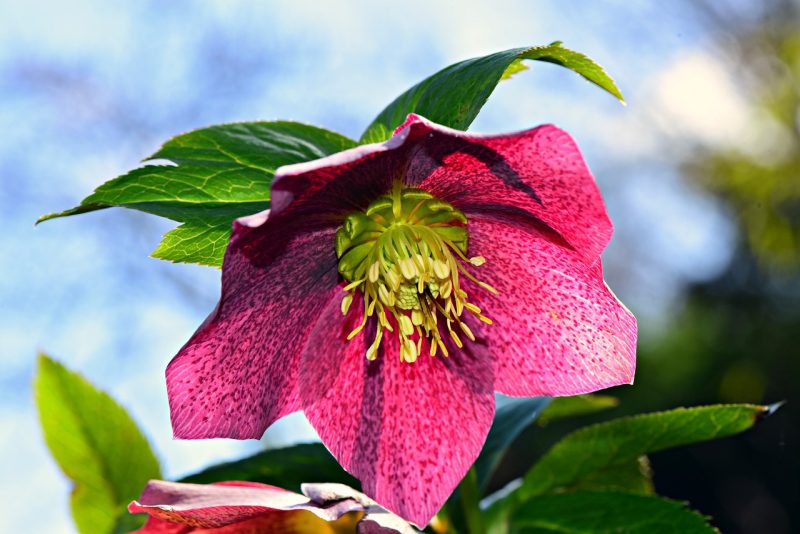
Hellebores, also known as Christmas roses or Lenten roses, are among the first flowers to bloom in January. These winter perennials display an impressive range of colors, including white, pink, purple, and even deep burgundy, which provide a stunning visual impact against the stark winter backdrop. They flourish in shaded areas and prefer well-drained soil, making them suitable for woodland gardens.
One of the unique aspects of hellebores is their long flowering season, which can last for several months, often peaking in January and February. In addition to being beautiful, hellebores are revered for their resilience and ability to thrive in adverse conditions. In folklore, hellebores are said to be associated with protection and healing, making them a meaningful addition to any winter garden.
Cyclamen (Cyclamen coum)

Cyclamen are enchanting tuberous plants that bloom in colorful shades of pink, red, and white, adding warmth to the chilly January landscape. While they are primarily recognized for their stunning flowers, their heart-shaped leaves are equally attractive. Cyclamen coum is particularly well-suited for the winter months, thriving in moisture-retentive, well-drained soil and partial shade.
The flowers of cyclamen have a captivating, unique shape, with petals that twist elegantly backward, creating a distinctive silhouette. Symbolically, cyclamen represent resignation and shy love, making them perfect for expressing tender sentiments during the cold season. Cyclamen can be grown both indoors and outdoors, bringing cheer to winter gardeners and flower enthusiasts alike.
Lily of the Valley (Convallaria majalis)

While often associated with spring, the lily of the valley can start blooming as early as January, depending on the climate. This delicate flower, with its small, bell-shaped white blooms, exudes a sweet fragrance that is both soothing and enchanting. A symbol of humility and purity, lily of the valley is often used in wedding bouquets, adding a touch of grace and elegance.
Lily of the valley thrives in partial to full shade and prefers moist, well-drained soil. They spread through rhizomes, creating lovely clumps that can enhance any garden space. Interestingly, despite their beauty, all parts of the plant are toxic if ingested, which serves as a reminder of nature’s duality—beauty and danger coexisting. Its blooms in January herald the eventual arrival of spring.
Camellia (Camellia japonica)

With the arrival of January, camellias begin to blossom, showcasing impressive, cup-shaped flowers in shades of pink, red, and white. These evergreen shrubs are often planted in gardens for their ornamental value and can thrive in various conditions, although they prefer well-draining, acidic soils.
Camellias symbolize love, affection, and perfection, making them a popular choice for romantic gestures and meaningful gifts. The flowers bloom in stunning abundance from late winter through early spring, providing a much-needed burst of color during the bleak days of January. Notably, Camellia japonica can grow quite large, making it an excellent focal point in landscape design.
Caring for camellias involves ensuring they receive adequate moisture, especially during dry spells, but it’s crucial to avoid waterlogging. These plants require some protection from harsh winter winds, which can damage their delicate blooms. With proper care, camellias can thrive for many years, creating a legacy of beauty in your garden.
Pansy (Viola tricolor var. hortensis)

Pansies are another vibrant flower that can often be found blooming throughout January. Known for their wide range of colors and striking “face-like” appearance, pansies add a cheerful touch to winter gardens. These hardy annuals thrive in cooler weather and can withstand frost, making them ideal for planting in the winter months.
Aside from their aesthetic appeal, pansies are edible flowers, often used in salads, desserts, or as decorative garnishes. They embody a sense of playfulness and joy and are associated with thoughts of loving memories and carefree nostalgia. Pansies can enhance any garden space, brightening up winter containers and borders with their charm and resilience.
Primrose (Primula)

Primroses are another delightful option that can begin to bloom as early as January, offering a palette of colors from soft pastels to bright and bold shades. They thrive in cold weather, making them ideal for early winter gardens. The primrose’s delicate flowers sit atop sturdy stems, creating a lovely display that beckons spring.
These flowers prefer moist, well-drained soil and partial shade but can adapt to sunnier spots with sufficient water. In folklore, primroses symbolize youth and renewal, often associated with the concept of new beginnings. Their cheerful presence in winter gardens can uplift spirits and signal the approaching warmth of spring. Moreover, primroses have been used in traditional medicine for their anti-inflammatory properties.
Ornamental Kale (Brassica oleracea var. capitata)

While not your traditional flower, ornamental kale deserves a mention when discussing January blooms. Its vibrant colors, ranging from deep purples to bright greens, add an extraordinary visual flair to winter gardens. The rosettes of ornamental kale can be used in outdoor displays or incorporated into bouquets, bringing a unique texture and contrast to floral arrangements.
Ornamental kale prefers cooler temperatures and can survive frost, making it a popular choice for winter landscaping. In addition to its ornamental uses, this variety of kale can be grown for culinary purposes, although the focus is typically on aesthetics. Using ornamental kale as a garden centerpiece helps to keep spaces lively during the long winter months.
Iris reticulata

The charming Iris reticulata is a dwarf iris that often blooms in January, bringing a splash of color with its striking purple, blue, or white flowers. These small but vibrant flowers thrive in well-draining soil and prefer full sunlight, making them perfect for early spring gardens. Iris reticulata is notably resilient and has the ability to withstand colder temperatures.
These flowers carry significant symbolism; irises are often linked to faith, hope, and wisdom. The unique coloring and intricate petals of Iris reticulata make them a popular choice in gardens and floral arrangements. Their early blooms are a sign of the strengthening sun and the eventual arrival of spring, providing an inspirational reminder that even the coldest months can yield beauty.
Tazetta Narcissus (Daffodil)

The Tazetta narcissus, commonly known as paperwhite daffodils, is a fragrant flower that can begin to bloom in January. Their clusters of small, trumpet-shaped flowers typically showcase white or pale yellow petals and are beloved for their delightful scent. These daffodils thrive in well-drained soil and can be grown indoors, adding a fresh fragrance to homes during the winter.
Historically, daffodils symbolize new beginnings or rebirth, making them a fitting flower for January, a month that beckons a new year and fresh starts. They are particularly popular for forcing indoors, allowing people to enjoy their blooms and fragrance during the winter months. With the right care, Tazetta narcissus can flourish both indoors and outdoors, signaling the slow approach of spring.
Witch Hazel (Hamamelis virginiana)

Witch hazel is a unique flowering plant that often blooms in January, producing striking yellow flowers that add a touch of warmth to the winter landscape. Not only are the blossoms visually appealing, but their enchanting fragrance also delights those who encounter them. Witch hazel is a deciduous shrub or small tree, and its blooms appear before the leaves, creating an impactful display.
Witch hazel is not only valued for its beauty but also possesses significant medicinal properties. The extract derived from the plant is commonly used in skincare products for its anti-inflammatory and astringent qualities. Thus, incorporating witch hazel in your garden has both aesthetic and practical benefits. It flourishes in well-drained, sandy soils and prefers full sun to partial shade. Beyond its medicinal applications, witch hazel symbolizes protection and healing, making it a meaningful addition to any January garden.
Crocus (Crocus spp.)
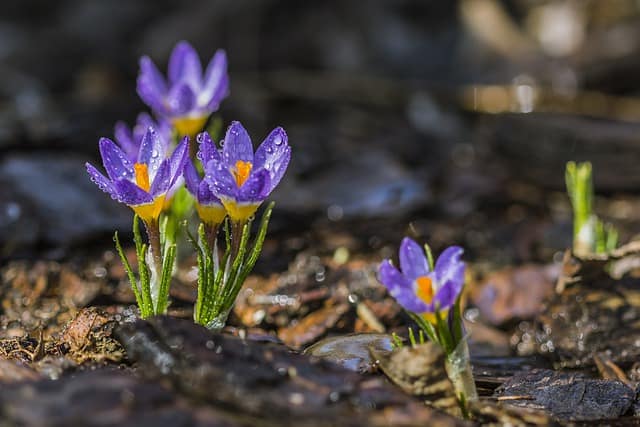
Crocuses are one of the most beloved early spring flowers, often emerging in January, dispelling the winter gloom with their vibrant colors. They are hardy perennial plants that offer a delightful array of colors, including purple, yellow, and striped varieties. Crocuses are typically among the first flowers to bloom, making them heralds of spring.
These flowers thrive in well-drained soil and full sun, and they are particularly effective in rock gardens or as naturalizing plants in meadows. Symbolically, crocuses are associated with cheerfulness and youth. Their ability to bloom after snow and withstand the cold represents hope and resilience. Planting crocuses in January not only brightens your garden but also serves as a wonderful reminder that spring is just around the corner.
Bergenia (Bergenia cordifolia)

Known for its large, glossy leaves, Bergenia, also referred to as “pigsqueak,” begins to produce clusters of pink or white flowers in late winter, often showing up in January. This perennial plant thrives in shady and partly sunny areas and is particularly valued for its ability to tolerate poor soil conditions.
The unique name “pigsqueak” comes from the sound produced when the leaves are rubbed together, showcasing yet another intriguing characteristic of this plant. Bergenias symbolize courage and resilience, which aligns perfectly with their enduring presence throughout winter. As these flowers bloom, their elegant clusters bring a touch of grace, enhancing garden beds and borders as they prepare for the warmth of spring.
Chionodoxa (Glory-of-the-Snow)

Chionodoxa, known as glory-of-the-snow, typically starts blooming in January with its star-like flowers that can be found in shades of blue, pink, or white. These small but striking flowers burst through the snow, creating a stunning display that is both eye-catching and uplifting. Chionodoxa thrives in well-drained soil and can be planted in full sun or partial shade.
Besides their beauty, these hardy little flowers hold symbolic value, often representing new beginnings and the arrival of spring. The glory-of-the-snow is perfect for planting in rock gardens or under trees and shrubs, where their delicate blooms can be appreciated as they emerge from their winter slumber. Their natural tendency to spread over time encourages a flowering carpet that enhances any garden space.
Sweet Alyssum (Lobularia maritima)

While sweet alyssum is often thought of as a spring or summer flower, in many climates, it can continue to bloom into January, offering clusters of tiny white, pink, or purple flowers that create a fragrant lawn or garden bed. This annual plant loves cool weather and can thrive in various soil types, making it versatile for gardeners.
Sweet alyssum is particularly known for attracting beneficial pollinators like bees and butterflies, essential for maintaining ecological balance. Symbolically, alyssum represents worthiness and beauty, while its sweet scent evokes a sense of calm. Sweet alyssum can be used as a ground cover or in containers, ensuring that even during winter months, gardens can remain lush and vibrant.
Wax Begonia (Begonia x semperflorens-cultorum)
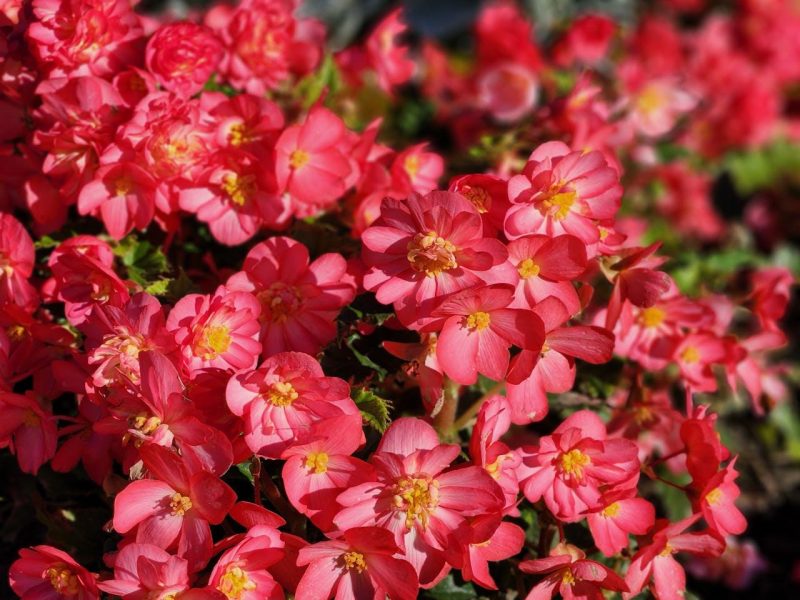
While wax begonias are often associated with milder months, they can also offer blooms in January, particularly in warmer climates or with indoor care. These plants produce glossy leaves and vibrant flowers in shades of red, pink, and white. Wax begonias are adaptable and can thrive in both sun and shade, making them suitable for various planting arrangements.
These charming flowers are not only famous for their beauty but also symbolize friendship and a sense of belonging. They are often utilized in borders, containers, or as houseplants, bringing a warm touch of color indoors during the colder months. With relatively low maintenance needs, wax begonias are an excellent option for those who want to infuse their spaces with life throughout January.
Geranium (Pelargonium)

Geraniums, especially the varieties often mistaken for true geraniums, can be vibrant bloomers in January. These perennials showcase bright and diverse flower colors, adding beautiful accents to both indoor and outdoor spaces during winter. Geraniums thrive in containers and pots, making them perfect for patios, window boxes, and even indoors where they can receive plenty of sunlight.
Their care is relatively straightforward; geraniums require well-drained soil, regular watering, and ample sunlight to flourish. Symbolically, geraniums represent friendship, comfort, and nostalgia, often used in bouquets to convey heartfelt sentiments. The lively blooms of geraniums can transform dull winter days into colorful spectacles, making them a favorite among gardeners looking to brighten their landscapes and homes.
Succulents (Various Species)

While they may not produce traditional blooms like other flowers, succulents can offer beautiful and mesmerizing visual interest throughout January. Many succulent species can surprise you with blooms that occur during the winter months, especially indoors, where they can receive adequate sunlight. Common varieties, such as Echeveria, Sedum, and Yucca, showcase unusual shapes and stunning colors, providing a unique textural element to any indoor or outdoor arrangement.
Beyond visual appeal, succulents symbolize endurance, tenacity, and timeless beauty, making them perfect for those who want low-maintenance yet captivating elements in their gardens. They thrive in well-draining soil and prefer dry conditions, making their care straightforward and stress-free. While other flowers might fade in the harsh winter cold, succulents bring resilience and charm to any arrangement during January.
Conclusion
January flowers hold a special place in the gardening calendar, offering a glimmer of hope and beauty amid the winter chill. From bright yellow winter jasmine to the delicate snowdrops and vibrant pansies, these flowers remind us that life and color can thrive even in the depths of winter.


